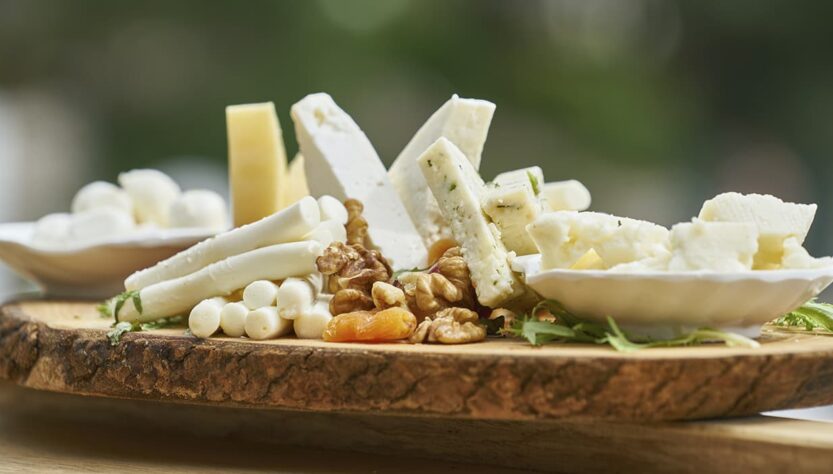Cheese owes its origin to an Arab merchant who lived on Earth about nine thousand years ago. One day, when he went on a long journey, he took with him fresh milk, which he poured into a dried calf stomach. In those days, dried animal stomachs served as a reliable container for transporting and storing food. After a day or so, the merchant untied his bag and discovered that the milk had gone sour and turned into dense lumps – a curd-like mass from which people later learned to make cheese…
The Etruscans, who lived in what is now central Italy more than three thousand years ago, were already able to make cheese from sheep’s milk. Historians say that they ate cheese simply with bread, sprinkled it on boiled ribbon pasta (yes, yes, pasta appeared in Italy around the same time, and its appearance here owes not to Marco Polo) and also added it to other dishes.
Both the ancient Greeks and the ancient Romans relied on cheese as one of the basic elements of their diet, and sheep cheese was the most common in pastoral societies. Cheese is mentioned in the works of Homer and Virgil, and Apicius, the most famous gastronomer of ancient Rome, even gives in his writings recipes for fine dishes with a variety of cheeses.
Modern Italy produces more than 400 kinds of cheese, and almost all of them are unique, because on the taste and texture of the cheese is influenced not only by the recipe, but also such important parameters as the raw material, which eats the animals that give milk for cheese, the climate in which the ripening of cheese, etc. For example, the northern regions of Italy (Valle d’Aosta, Piedmont, Liguria, Lombardy, Trentino-Alto Adige, Friuli-Venezia Giulia, Venice, Emilia-Romagna) have a landscape that is ideal for grazing cows, so most of the cheese produced in the north is made from cow’s milk. Central (Marche, Tuscany, Umbria, Lazio, Abruzzi, Molise) and southern Italy (Puglia, Campania, Basilicata, Calabria, Sicily, Sardinia) mainly produce sheep cheeses as well as cheeses made from goat milk and buffalo milk (production of the latter cheeses is typical of the southern regions).
The taste of a particular cheese depends, as we have said, on many factors. First of all, the type of milk used. Secondly, from the place where it is produced, from the season during which it is made, from the time of ripening. All of these factors are major determinants of taste. For example, summer cheese will differ from winter cheese with more flavor because the animals eat fresh herbs rather than dry forage. And the longer the cheese matures, the sharper and saltier the flavor becomes.
The place of cheese production is fundamental. A peculiarity of Italian cheese making is that creameries process milk from very small, territorially limited areas, and this is the regional specificity of Italian cheeses. The herbs and hay in a particular area that the animals eat give a certain flavor to the milk, which subsequently gives the cheeses their unique characteristics. Simply put, cows grazing around Novara (Piedmont) will give milk that tastes different than milk from cows grazing near Bari (Puglia), so Novara ricotta will taste different from Bari ricotta. Similar specificity can be found in winemaking, where the soil on which the grapes grows plays a similar role: the same grape variety grown in different regions will produce different berries and thus different wine.
Cheese in Italian would be formaggio, and the word probably comes from the Latin formaticum, meaning woven cane baskets in which curds were placed to dry and ripen. But it may also come from the Greek formos – form, because cheese tends to be molded into a certain shape.
The structure of cheese depends largely on its water content. Some cheeses, such as Crescenza, have a rather liquid structure, while other cheeses, especially those in the grana category, are dry and crumbly. The age of the cheeses also affects the structure – the older the cheese, the drier, firmer and crumblier it is.
Many Italian cheeses are best enjoyed as a meal in their own right, but there are some cheeses that are better used for culinary purposes. However, many Italian cheeses are consumed in both the first and second forms. Just keep in mind that cheeses that have been cooked can lose much of their unique characteristics. If you really want to enjoy the flavor of a perfectly ripe Robiola, it’s better to eat it with bread than to make it into a pasta sauce.
